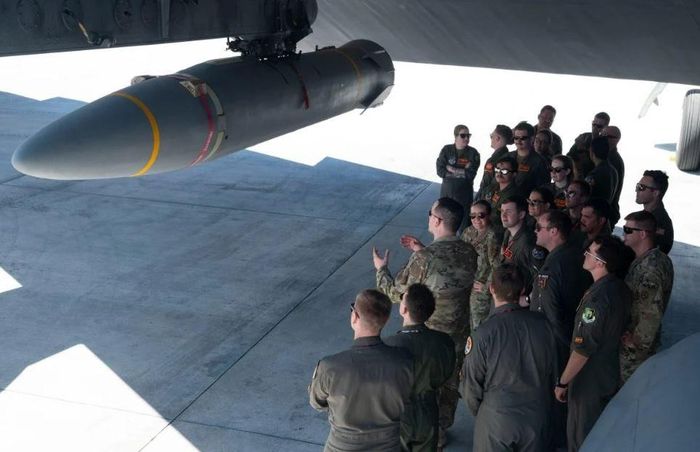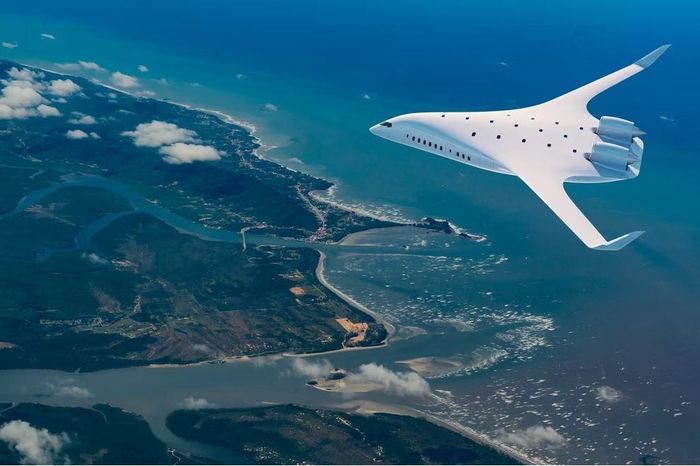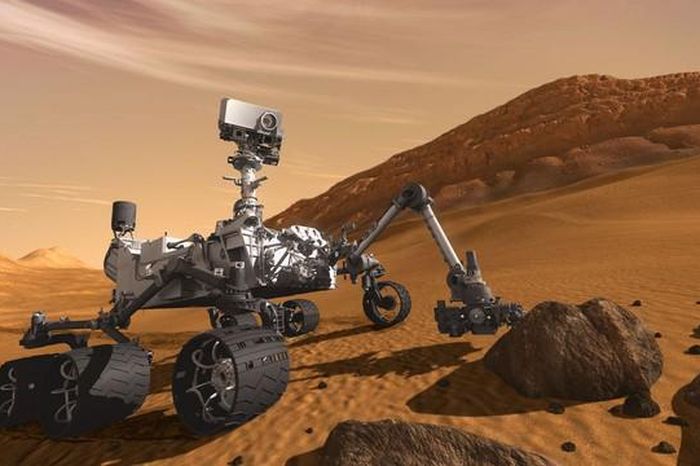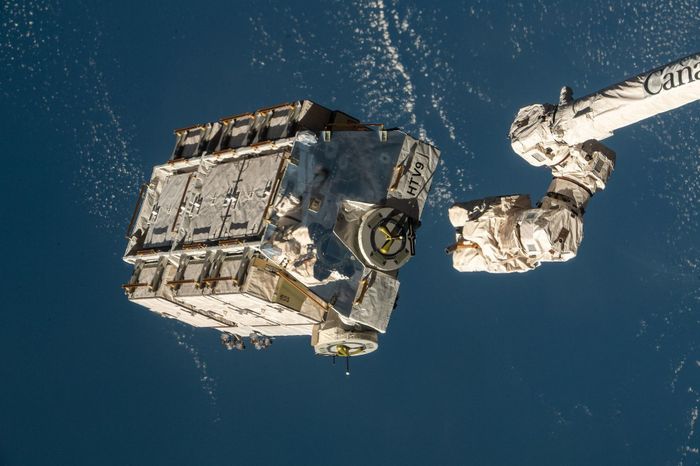Chinese scientists found vulnerabilities in NASA's hypersonic weapons development software
According to the research team led by Professor Liu Jun (of the Hypersonic Technology Laboratory of the National University of Defense Technology of China), this small error between complex equations can lead to "inevitable results mistakes" when scientists simulate and analyze important problems, such as high-temperature wear. This information was published in the academic journal Acta Aerodynamica Sinica (China).
When an aircraft's speed exceeds Mach 5, intense friction with the air creates temperatures so high that they can ionize air molecules and cause chemical reactions. Mach 5 is a unit of speed, specifically 5 times the speed of sound.
These complex reactions can erode aircraft surfaces and change the temperature or density of the surrounding air. Inaccuracies in model data can have a profound impact on aircraft performance and safety.
The software Liu Jun mentioned is Vulcan-CFD, developed by NASA's Langley Research Center. Due to its potential use in the development of hypersonic weapons, Vulcan-CFD is subject to export controls with distribution limited to US borders.
Langley Research Center is one of NASA's oldest and largest research centers, located in Hampton, Virginia, USA.
The Langley Center focuses on research in the fields of aerodynamics, aeronautical engineering, materials, structures, control systems, information systems, Earth science, satellites, and space exploration.
Langley Center played an important role in many of NASA's achievements, including the Wright brothers' first flight, the Apollo program, the space shuttle, and the International Space Station.
Chinese researchers gathered information from an academic paper published in 2020, in which the NASA software development team introduced the operating principle of Vulcan-CFD and some of the key equations it uses .
Liu Jun and his colleagues said the software was 'famous' in the industry.
Having a laboratory in Hunan province, Liu Jun participated in research with scientists from the Chinese Army's Aerospace Engineering University in Beijing and the Aerodynamics Research and Development Center. learning force in Mianyang municipality in Sichuan province. These organizations have contributed to China's rapid development of hypersonic weapons technology over the past two decades.
The speed of US hypersonic weapons development lags behind that of China and Russia and is gradually being overtaken by a number of smaller countries. North Korea said it successfully tested the Mars 16B land-based hypersonic missile on April 3.
Meanwhile, the US Army's long-range hypersonic weapon (LRHW), similar to North Korea's missiles, failed consecutively in 2021 and 2022. The next three planned LRHW launches were all canceled or postpone.
These failures come at a high price. The US military has requested $1.28 billion in fiscal year 2025 alone from taxpayers "to deliver an experimental prototype with limited combat capability by 2024".
The US Congressional Budget Office blamed the slow progress on high temperatures.
'The fundamental challenge that remains involves managing the extremely high temperatures to which hypersonic missiles are exposed while traveling at high speeds through the atmosphere for much of their journey,' the Office wrote in a report after conducting a thorough investigation into US hypersonic weapons programs last year.
'Shielding hypersonic missiles' sensitive electronics, understanding how different materials behave, and predicting aerodynamics at sustained temperatures as high as 3,000 degrees Fahrenheit (about 1,649 degrees Celsius) requiring extensive flight testing. Tests are ongoing, but failures in recent years have slowed progress,' the US Congressional Budget Office said.

Liu Jun's team said it discovered a flaw in the equation used by NASA in Vulcan-CFD to describe the changes in concentration of various chemical components, such as oxygen and nitrogen, in the gas mixture at Vulcan-CFD. high temperature. This equation does not account for the mixing and transport of components due to small-scale turbulence that occurs when the temperature changes rapidly or fluctuates.
Due to the complexity of hypersonic aerodynamics, modelers may ignore some small-scale motions due to lack of understanding or calculations that are too complex to resolve.
Liu Jun's team said NASA's lack of attention to this detail led to the software's inability to accurately predict the chemical composition and temperature changes on the aircraft's surface, which could have a significant impact on software-based simulation, design, or analysis work.
NASA was one of the first organizations in the world to explore hypersonic technology.
The term 'hypersonic' was coined by Qian Xuesen, the 'father' of Chinese rocketry, when he was working at NASA as one of the three founding scientists of the Jet Propulsion Laboratory ( JPL) in 1946.
Scientists and engineers at NASA have conducted pioneering research and flight testing in this field, but in recent years, they have repeatedly suffered from budget cuts and brain drain.
JPL laid off 530 employees in February due to funding uncertainty.
Located in the city of Pasadena (California, USA), JPL is a non-profit research and development center funded by NASA. It is a center specializing in the field of jet propulsion.
JPL focuses on researching and developing spacecraft robots for scientific missions and space exploration.
In addition, JPL also participates in other projects such as developing robotics technology, Earth science and STEM education.
STEM is an acronym for a form of education aimed at a knowledge economy with a combination of four fields: Science, Technology, Engineering and Mathematics.
JPL has contributed to many important NASA achievements, including the Apollo program, the space shuttle, the International Space Station, and the probes to Mars, Jupiter, Saturn and other planets.
You should read it
- Here's your chance to design a NASA payload for a Roomba-sized moon rover
- NASA opens the entire library of photos, videos and audio for free, anyone can see
- NASA will prioritize the recruitment of experienced scientists in blockchain and cryptocurrency
- NASA's top secret inventions have just been revealed
- NASA launches new Sun tracking tool
- Why didn't NASA intend to return to the Moon?
- How to watch NASA and Russia launch a new crew to the ISS on Thursday
- NASA's Internet speed rumor reaches 91 Gb / s, is it true to download movies in 1 second?
May be interested
- This is the first weapon of attack of the US Space Force
 it is on the list of 48 weapons that will be published in the next 7 years, with the purpose of temporarily interfering with russian or chinese communication satellite signals.
it is on the list of 48 weapons that will be published in the next 7 years, with the purpose of temporarily interfering with russian or chinese communication satellite signals. - Many major vulnerabilities found in Kaspersky Antivirus for Linux servers, download the patch here
 leandro barragan and maximiliano vidal, two researchers from network security company core security, have found a number of vulnerabilities that can be exploited in the web management console of kaspersky anti-virus for linux servers.
leandro barragan and maximiliano vidal, two researchers from network security company core security, have found a number of vulnerabilities that can be exploited in the web management console of kaspersky anti-virus for linux servers. - Found 400-year-old Chinese ceramic shipment in Mexico
 a series of hundreds of years old ceramic artifacts originating from china have been found in mexico with stories of stirring and exciting international archaeological circles.
a series of hundreds of years old ceramic artifacts originating from china have been found in mexico with stories of stirring and exciting international archaeological circles. - Many 4,500-year-old tools are found in Khurda, Odisha
 students at utkal university discovered many 4,500-year-old civilian stone tools and weapons at various locations in khurda district.
students at utkal university discovered many 4,500-year-old civilian stone tools and weapons at various locations in khurda district. - The strangest weapons in One Piece
 there are many types of weapons in one piece. below are some unique weapons in the one piece series that you have never seen anywhere else.
there are many types of weapons in one piece. below are some unique weapons in the one piece series that you have never seen anywhere else. - Giant 8 kg mushroom found in China
 a giant 8-kilogram and 1.8-meter giant mushroom was found in yunnan province in southwest china.
a giant 8-kilogram and 1.8-meter giant mushroom was found in yunnan province in southwest china. - What is your Chinese name?
 tipsmake.com will introduce you a tool to see what your chinese name is, to prove that the new vietnamese version is not the same as the simplified chinese transliteration.
tipsmake.com will introduce you a tool to see what your chinese name is, to prove that the new vietnamese version is not the same as the simplified chinese transliteration. - Many serious vulnerabilities have been discovered that allow attackers to take full control of the 4G router
 in the past few months, security experts around the world have found that many vulnerabilities exist in 4g routers.
in the past few months, security experts around the world have found that many vulnerabilities exist in 4g routers. - Samba vulnerabilities allow hackers to invade thousands of remote Linux computers
 a 7-year-old vulnerability was found on samba software, allowing an attacker to hack and control linux and unix computers remotely.
a 7-year-old vulnerability was found on samba software, allowing an attacker to hack and control linux and unix computers remotely. - IBM developed a new technology to patch security holes
 top security researchers at ibm have recently developed a new technique to etch almost entirely the impact of security vulnerabilities before they are actually found.
top security researchers at ibm have recently developed a new technique to etch almost entirely the impact of security vulnerabilities before they are actually found.










 Tens of millions of people await the total solar eclipse in North America on April 8
Tens of millions of people await the total solar eclipse in North America on April 8 The Soyuz spacecraft returned from the ISS, landing in Kazakhstan
The Soyuz spacecraft returned from the ISS, landing in Kazakhstan FAA 'green light' for JetZero's 'mono-wing' aircraft
FAA 'green light' for JetZero's 'mono-wing' aircraft NASA robot enters the alien 'river of life'
NASA robot enters the alien 'river of life' Garbage falls from space and hits civilian homes in the US
Garbage falls from space and hits civilian homes in the US 'Hot' race to design a self-propelled vehicle on the Moon for NASA
'Hot' race to design a self-propelled vehicle on the Moon for NASA